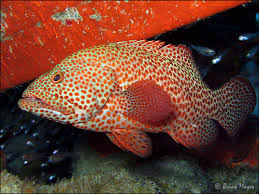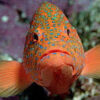Exploring the Relationship Between the Dragon and the Yin-Yang Elements in Chinese Culture

In Chinese culture, the dragon is a profound symbol that represents power, vitality, and cosmic order. But its significance stretches far beyond mere mythological storytelling. One of the most fascinating aspects of the dragon’s symbolism is its deep connection to the ancient Chinese philosophical concept of Yin-Yang, a dualistic framework that embodies the balance of opposites in the universe. The relationship between the dragon and Yin-Yang is not only a reflection of the forces of nature but also a representation of the harmony and balance that governs life and the cosmos. This article explores the dragon’s connection to the Yin-Yang elements and how this relationship has shaped Chinese culture, philosophy, and art over centuries.
The Concept of Yin-Yang in Chinese Philosophy
Before delving into the relationship between the dragon and Yin-Yang, it is important to understand the basic principles of Yin-Yang. At its core, Yin-Yang is a philosophy that emphasizes the interdependence of opposite forces. Yin is typically associated with qualities such as darkness, passivity, femininity, and the moon, while Yang represents light, activity, masculinity, and the sun. These two forces are not seen as opposing or antagonistic but as complementary elements that work together to maintain balance in the universe.
In traditional Chinese thought, the universe is governed by a dynamic interplay between Yin and Yang. Everything in existence is thought to contain both Yin and Yang, and the balance between them determines the harmony of life. The Chinese believe that when Yin and Yang are in perfect balance, peace, health, and prosperity prevail. When one force overpowers the other, however, it can lead to chaos, conflict, or destruction.
The philosophy of Yin-Yang has been a cornerstone of Chinese medicine, martial arts, cosmology, and even art. It is an essential part of Taoism, where the flow of life and the universe is understood to be governed by this delicate balance. Understanding how the dragon, a prominent and sacred symbol in Chinese culture, interacts with these dual forces is crucial to appreciating its deeper significance.
The Dragon and Yin-Yang: A Symbolic Relationship
In Chinese culture, the dragon embodies both Yin and Yang qualities, making it a perfect symbol of the interdependence and harmony between these two forces. While the dragon is often associated with Yang energy due to its dynamic and powerful nature, it also represents aspects of Yin, showing that even in its forceful, active manifestations, it maintains balance with more passive, nurturing elements.
The Dragon as a Symbol of Yang Energy
The dragon is often linked to the Yang aspect of Yin-Yang, which is characterized by power, movement, and brightness. The dragon’s physical attributes — its long, serpentine body, fierce claws, and majestic presence — are all expressions of Yang energy. As the symbol of imperial power and authority, the dragon represents the masculine qualities of strength, dominance, and vitality.
In Chinese mythology, the dragon is frequently depicted as a powerful and untamable creature that soars through the heavens, controls storms, and represents the dynamic, life-affirming forces of nature. These characteristics align with the Yang energy, which is associated with action, movement, and the sun. As such, the dragon is often viewed as a bringer of life and good fortune, capable of invoking prosperity, fertility, and wealth. Its presence is believed to be a force of creation, much like the Yang energy that fuels growth and development in the world.
The Dragon’s Yin Qualities
Despite its Yang-like attributes, the dragon also embodies several Yin qualities. Yin is associated with calm, passivity, and femininity, and these traits can be seen in the dragon’s role as a protector and nurturer. In Chinese culture, the dragon is often linked to water, a key element in the Yin-Yang system. Water is a fundamental symbol of Yin because of its ability to flow gently and embrace all things in a fluid and nurturing way. The dragon’s ability to control water, rain, and floods ties it to this passive, nurturing energy of Yin.
In some Chinese myths and legends, the dragon is depicted as a caring and protective figure, especially when it comes to its role in the natural world. Dragons were believed to reside in bodies of water, and they were said to regulate the flow of rivers and streams. This connection between the dragon and water symbolizes its ability to nurture life and maintain balance in nature, reflecting the passive and receptive qualities of Yin.
Moreover, dragons are sometimes depicted as wise, ancient beings that possess deep knowledge and understanding of the natural order. This wisdom is a characteristic of Yin, which is also associated with intuition, contemplation, and the accumulation of knowledge. The dragon, in this sense, symbolizes the harmony between Yin and Yang, where wisdom is used to guide and balance the more dynamic forces of life.
The Dragon’s Role in Balancing Yin-Yang in Nature
The dragon’s role in Chinese culture extends beyond its symbolic representation of Yin and Yang. In Chinese cosmology, the dragon is thought to play a vital role in maintaining the balance between the natural elements of the universe. It is often seen as a celestial being that mediates between the heavens and the earth, ensuring that the energies of Yin and Yang are in harmony.
The Dragon as a Mediator Between Heaven and Earth
In ancient Chinese belief, dragons were believed to inhabit the realm between heaven and earth, acting as intermediaries between the gods and humans. As a creature of both the terrestrial and celestial realms, the dragon is uniquely suited to represent the balance of Yin and Yang. It embodies both the earthly and heavenly forces that shape the world, making it a perfect symbol of cosmic order.
The dragon is also associated with the weather, which is another important element in the balance of Yin and Yang. In Chinese mythology, the dragon is believed to control the rain and storms, which are essential for agriculture. The balance of rain and sunshine, the interplay of Yin (rain) and Yang (sunlight), is crucial for a successful harvest. The dragon, through its connection to the weather, ensures that the natural rhythms of Yin and Yang are maintained, helping the earth to flourish and grow.
The Dragon in Traditional Chinese Medicine
In traditional Chinese medicine (TCM), the principles of Yin and Yang are used to understand the balance of energies within the human body. Just as the dragon symbolizes the harmony between Yin and Yang in the cosmos, it is also used as a metaphor in TCM to describe the need for balance within the body. In this context, the dragon represents the flow of vital energy (Qi), which must remain in balance for health and well-being.
For instance, the dragon’s role in regulating the elements of water and earth mirrors the concept of balance in the body’s internal systems. TCM practitioners believe that the harmony of Yin and Yang is essential for the smooth flow of Qi, and the dragon’s influence over the flow of water and energy is seen as symbolic of how this balance should be maintained within the body.
The Dragon and Yin-Yang in Chinese Art and Architecture
The connection between the dragon and the Yin-Yang philosophy is also evident in Chinese art and architecture. Dragons often appear in traditional Chinese paintings, sculptures, and architectural designs, where they symbolize the balance between the active and passive forces of the universe. In these artistic representations, the dragon is often shown in dynamic motion, embodying the Yang aspects of power and vitality, while at the same time being surrounded by elements such as water, clouds, and mountains, which represent the more passive, nurturing qualities of Yin.
In traditional Chinese architecture, the dragon is often featured in the design of imperial palaces, temples, and tombs. These buildings were constructed to reflect the harmony of the cosmos, with the dragon symbolizing the balance between the earthly and heavenly realms. For example, the dragon is often depicted on the roofs of palaces and temples, where it serves as a protector and guardian, ensuring that the Yin and Yang forces of the building’s environment remain in equilibrium.
The Dragon and Yin-Yang in Modern Chinese Culture
While the dragon’s connection to Yin and Yang remains an integral part of traditional Chinese thought, its symbolic significance continues to be relevant in modern Chinese culture. In contemporary China, the dragon is still regarded as a symbol of prosperity, strength, and harmony. The concept of Yin and Yang is also applied in various aspects of modern life, from business to personal relationships.
For example, in Chinese Feng Shui, which is based on the principles of Yin and Yang, the dragon is often used as a symbol of good fortune and positive energy. People may use dragon motifs in their homes or workplaces to bring balance and harmony to their environment. This reflects the ongoing importance of the dragon as a symbol of the eternal balance between Yin and Yang.
Conclusion
The relationship between the dragon and the Yin-Yang elements in Chinese culture is a profound and multifaceted one. The dragon, as a symbol of power, wisdom, and vitality, embodies both Yin and Yang qualities, reflecting the interdependence of these two cosmic forces. In Chinese philosophy, mythology, and art, the dragon serves as a reminder of the importance of balance and harmony in the universe. It plays a crucial role in maintaining the equilibrium between opposing forces, whether in the natural world, the human body, or the cosmos. Through its connection to Yin and Yang, the dragon remains a timeless symbol of balance, strength, and unity in Chinese culture.

